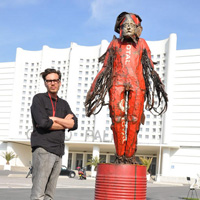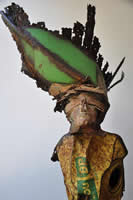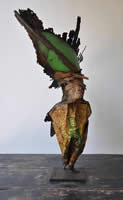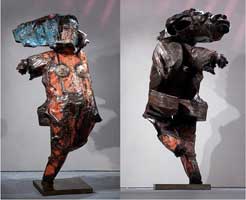Who is Julien Allègre?
Young Julien Allègre loves metals and likes to understand how things are put together; to unlock the mysteries, he starts to study mechanics. His love for playing percussions, however, takes him on a different road. Music in turn helps him weave connections with art in general. Expanding his universe and meeting other artists, he became interested in painting and sculpture, and his own creativity is awakened. From his childhood, Allègre remembers fondly playing in his father’s studio, an amateur painter and model builder, he had taken refuge in the attic.




